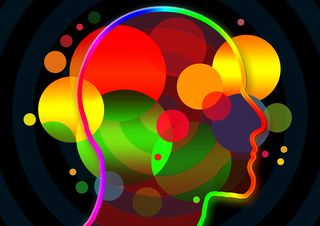
Autism
Autism and Amplified Musculoskeletal Pain Syndrome (AMPS)
The role of sensory factors and anxiety.
Posted August 6, 2020 Reviewed by Ekua Hagan

It was a long-held belief that children on the autism spectrum were impervious to pain. Such a view was based on anecdotal observations. Self-injurious behavior and the absence of typical pain responses were taken as proof that pain signals didn’t register or that the threshold for pain was exceptionally high.
The misguided and tragic conclusion that autistic kids could not experience pain has been debunked. Research has carefully examined pain responses in controlled experimental settings (as an example of such a study see Nader et al, 2004; for a review of these studies, see Moore, 2015). These studies show that it’s not that kids on the spectrum don’t have pain. Instead, they express pain in ways that may not be immediately recognizable by others.
Indeed, there is a growing body of research indicating that not only do autistic persons have pain but that they experience it to a greater degree than others; particularly in debilitating chronic pain conditions (see Lipsker et al, 2018).
What Is AMPS?
One of the debilitating chronic pain conditions to consider in Autism is Amplified Musculoskeletal Pain Syndrome or AMPS for short. The American College of Rheumatology defines AMPS as “an umbrella term for noninflammatory musculoskeletal pain."
Some characteristics of AMPS include:
- Very intense pain that often increases over time
- Pain that is localized to a particular body part or diffuse (affecting several areas of the body)
- Fatigue, poor sleep, and cognitive "fogginess"
- Allodynia—this is the experience of pain in response to very light stimulation
Effective treatment of AMPS is multidisciplinary in nature. The Amplified Pain Program that I am involved with through Atlantic Health System employs a team approach that includes physical and occupational therapy, cognitive behavioral therapy, family support, adjunct therapies such as music therapy, and physician oversight through a collaboration between the departments of Rheumatology and Physiatry.
In all cases, proper diagnosis is crucial and other potential causes of pain must be ruled out by a physician. Once identified, the primary goal of treatment is a return to functioning.
The outcomes data from our program at Atlantic Health System demonstrates that a multidisciplinary approach to AMPS not only reduces pain but improves the quality of life across a range of domains (Lynch, et al., 2020).

AMPS and Sensory Factors
Although the precise cause of AMPS is unclear, research suggests that the pain signaling system is impaired. In other words, the brain reacts to very light sensation as if it is experiencing some kind of major insult or injury.
Given that a sensory signaling system is involved in AMPS, it is not surprising that this condition occurs in people on the autism spectrum. Sensory processing (organizing and filtering sensations) is known to be impaired in autism and these impairments are often a core contributor to distress. Pain as a component of a signaling system can become dysregulated just as other sensory systems can (e.g. tactile, auditory, taste, etc).
AMPS and Emotional Factors
In addition to sensory factors, in AMPS (as with other chronic pain conditions), it appears that emotional factors can have a meaningful impact on symptoms. There is a strong relationship between chronic pain and emotional states such as anxiety and depression and this relationship appears to be bidirectional. In other words, pain can make one anxious and depressed and anxiety and depression can make pain worse.
The processing of emotion occurs in both the mind and the body. As the body experiences change in response to emotion, the pain signals may become hypersensitive and begin to fire. Thus, the person experiences physical pain, although there is no physiological cause outside of the body.
Anxiety and anxiety disorders are known to be quite high for persons on the autism spectrum. Such anxiety is due to a range of factors including sensory overload, challenges with adjusting to changes and transitions, and the stress of social stigma. Thus, for those on the spectrum anxiety and sensory systems may interact to wreak havoc on the pain signaling system.
Both sensory factors and the presence of persistent stress and anxiety may make autistic persons more vulnerable to AMPS than the population at large. However, diagnostic overshadowing and the difficulty that some persons may have with reporting symptoms (particularly children and/or those who are minimally verbal) may be creating a situation in which AMPS is underdiagnosed in autism.
Recommendations
Given the devastating impact that AMPS can have on a person, it is crucial that those on the spectrum are properly diagnosed and treated. Some recommendations to ensure this happens include:
- Challenging assumptions that autistic persons don’t experience pain
- Providing an effective means for conveying pain symptoms-including nonverbally
- Watching for patterns of behavior and distress that may be indicative of pain and reporting these to a health care provider
- Providing access to treatment programs and providing accommodations and modifications to these programs when necessary
References
Lipsker, C. W., Bölte, S., Hirvikoski, T., Lekander, M., Holmström, L., & Wicksell, R. K. (2018). Prevalence of autism traits and attention-deficit hyperactivity disorder symptoms in a clinical sample of children and adolescents with chronic pain. Journal of Pain Research, 11, 2827.
Lynch, C., Alper, S., Nativ, S., Sirak, M., Chiu, S., Paul, S., Wood, S., & DeSantis, E,. (2020). Impact of a 4-week intensive outpatient program for Amplified Pain Syndrome on pain intensity and health-related quality of life in an adolescent population. Abstract presented for the Atlantic Health System's 24th Annual Research and Innovation Symposium
Moore, D. J. (2015). Acute pain experience in individuals with autism spectrum disorders: A review. Autism, 19(4), 387-399.
Nader, R., Oberlander, T. F., Chambers, C. T., & Craig, K. D. (2004). Expression of pain in children with autism. The Clinical journal of pain, 20(2), 88-97.



